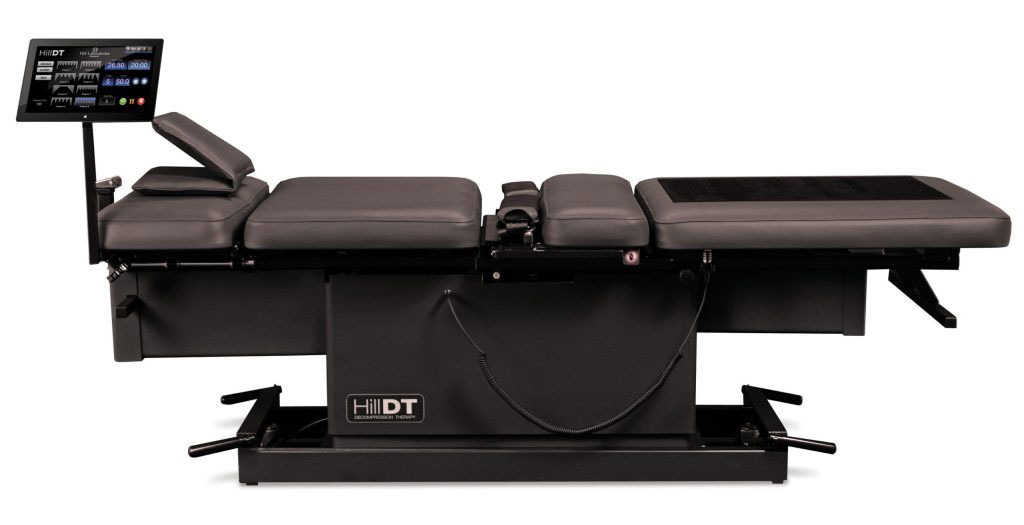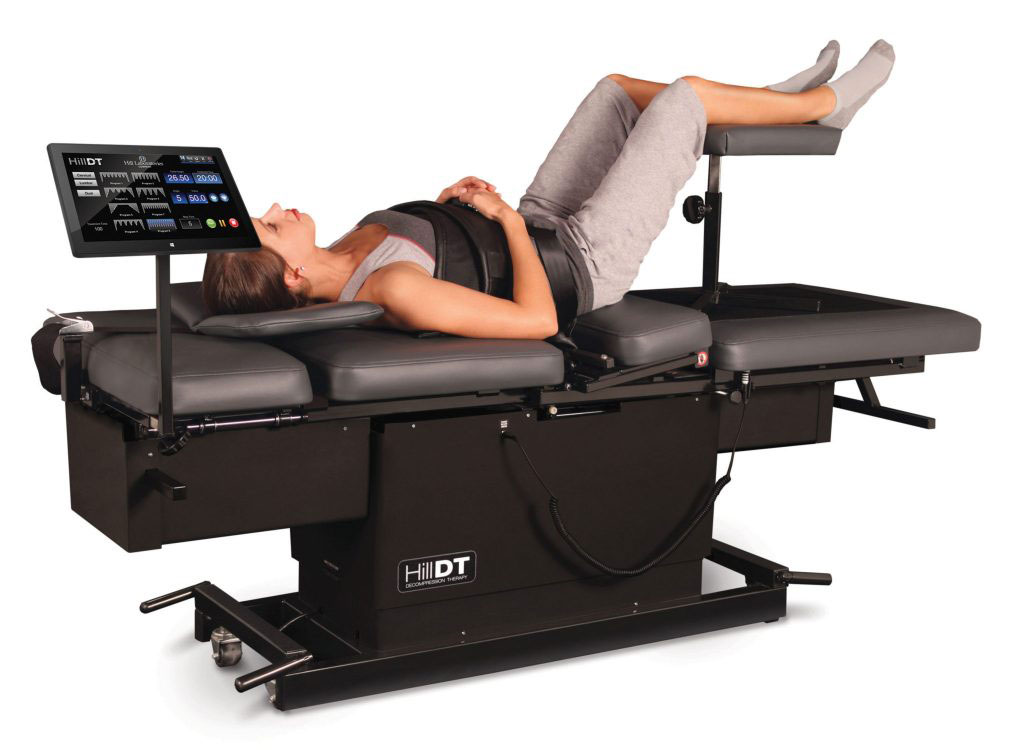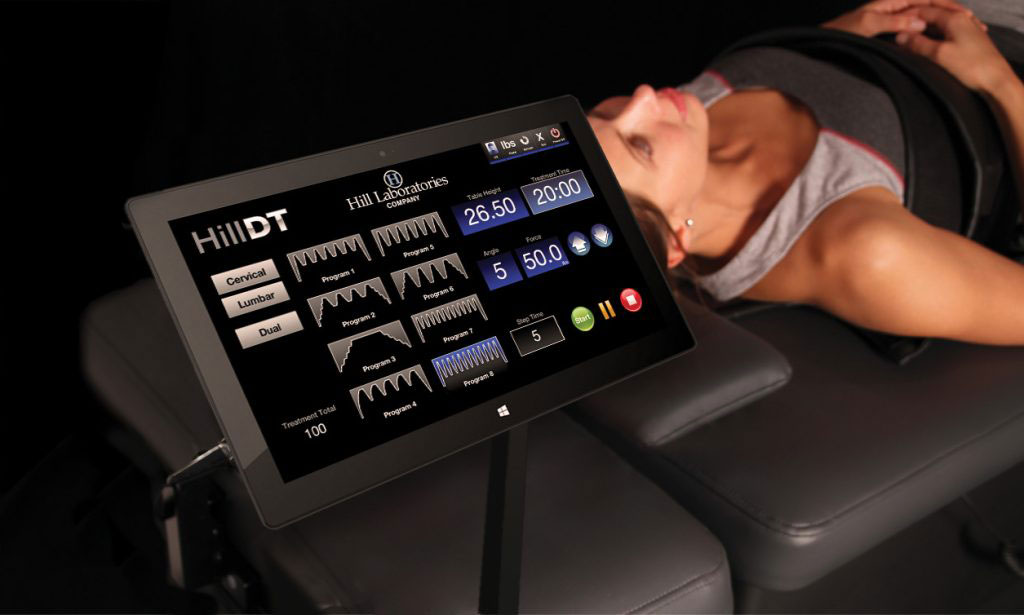
Spinal decompression therapy is a non-surgical procedure used to treat herniated, degenerative, or bulging discs by stretching out the spine. Spinal decompression therapy works through the use of a traction table, either with a cable and pulleys or with a motorized version that consists of upper and lower portions that move independently of each other, the latter of which is far more effective. The spinal decompression table creates negative pressure in between the spinal discs, allowing for both healing and realignment of the malfunctioning discs by promoting the flow of nutrient-rich fluid, oxygen, and water into the discs.
During the procedure, the patient lies down on and is harnessed to the table with pillows positioned in ways to help the patient feel more comfortable. Once the patient is in the proper position, the upper and lower portions of the table begin to separate from each other in order to stretch out the patient’s spine. The procedure is applied with various amounts of pressure, according to the physical condition and size of the patient. Spinal decompression tables are also sensitive to the resistance of your muscles and will decrease pressure when appropriate to allow your muscles to relax. Each treatment session usually lasts around 30 to 45 minutes.


While research for spinal decompression therapy is still in its early stages, the results have been increasingly in favor of the efficacy of spinal decompression therapy. In the early 2000s, there was a lot of skepticism about spinal decompression therapy. However, recent research has consistently shown the efficacy of this procedure for improving disc diseases and conditions. In addition to helping patients with bulging, degenerative, or herniated discs, spinal decompression therapy is also useful in treating sciatica, spinal arthritis or stenosis, facet joint syndrome, and neck and lower back pain. That said, spinal decompression therapy is not safe for individuals who have the following contraindications: pregnancy, broken vertebras, spinal tumors, spinal fusion patients, patients with artificial discs, and patients who have experienced failed back surgery.
The results of spinal decompression therapy vary according to the extent of your condition and the measures you take to maintain a healthy back. Patients can usually start to see results within three to six weeks of treatment. For best results from spinal decompression therapy, most patients require around 12 to 20 sessions spaced throughout a four- to six-week period. Most patients can expect long-lasting pain relief from spinal decompression therapy through its promotion of internal healing for three months or more.

